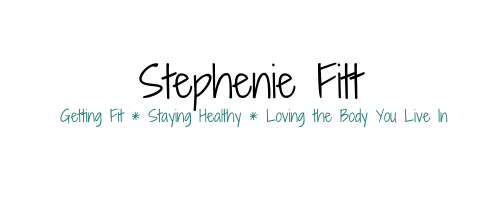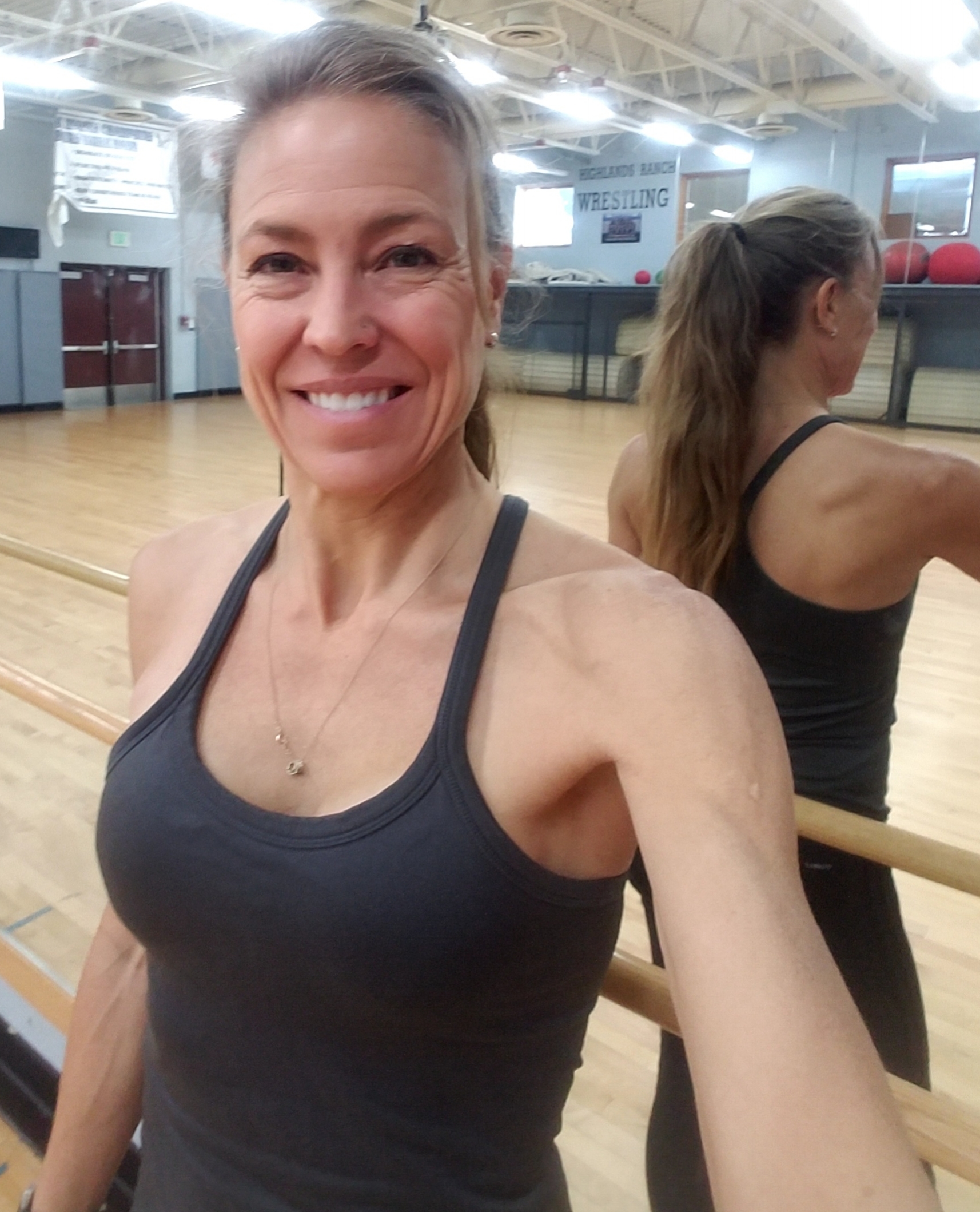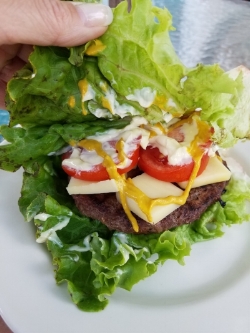When you hit the gym or head out for a run, the last thing on your mind is likely to be the materials your workout clothes are made from. But did you know that most activewear is made from petroleum-based synthetic fabrics like polyester, nylon, and spandex? These materials, while stretchy, durable, and moisture-wicking, come with some hidden health concerns.
When you sweat, your body is not just cleansing itself—it is also exposing your skin to these synthetic fibers, potentially increasing your exposure to harmful substances, otherwise known as “forever chemicals.” Forever chemicals, known as per- and polyfluoroalkyl substances (PFAS), are synthetic chemicals used in various consumer products for their water- and grease-resistant properties. They are called "forever chemicals" because they do not break down in the environment or in the human body, leading to potential health risks such as cancer and hormone disruption. This raises the question: Should we be rethinking the plastics in our workout clothing?
In this post, we'll explore:
How synthetic materials in activewear affect your body during exercise.
Steps you can take to minimize exposure to potential risks.
The benefits of switching to natural fiber workout clothing.
The Problem with Plastic Activewear
Synthetic fabrics have become the gold standard for workout clothing due to their lightweight, durable, and moisture-wicking properties. However, these materials are essentially plastics, made from petroleum-based products. Here’s why that matters:
1. Sweat and Chemicals
When you sweat, your body absorbs more than just water. Many synthetic fabrics are treated with chemicals, such as dyes, stains, flame retardants, and antimicrobial agents. According to a study published in Environmental Science and Technology, chemicals from synthetic clothing can be transferred to your skin through sweat. Once on the skin, these chemicals are easily absorbed into your bloodstream, potentially disrupting bodily functions over time.
Plastic-based fabrics can also release microplastics, tiny plastic particles, onto your skin. These microplastics may clog pores, irritate your skin, or contribute to long-term health issues when absorbed.
2. Breathability Issues
Petroleum-derived fabrics often trap heat and moisture against your skin instead of allowing it to escape. This trapped environment can become a breeding ground for bacteria and skin irritation, leading to issues like body acne or fungal infections.
3. Impact on the Environment
Plastics in activewear don’t just affect you—they impact the planet too. Synthetic workout clothes shed microplastics during every wash, which eventually make their way into our oceans. These microplastics are consumed by marine life, presenting risks across ecosystems and food chains.
Statistics to Consider
Over 60% of clothing is made from synthetic fibers like polyester and nylon.
Washing synthetic fabrics releases an estimated 500,000 tons of microplastics into our oceans each year (IUCN Report).
Studies suggest the average person ingests 50,000 microplastic particles annually through food, drinking water, and air.
How to Minimize Your Exposure to Synthetic Materials
If completely avoiding synthetic workout wear isn’t feasible, you can still take steps to reduce your exposure to potential risks:
1. Choose Certified Non-Toxic Activewear
Look for labels that indicate sustainability and safety certifications like OEKO-TEX or GOTS (for organic materials). These certifications ensure that clothing is free from harmful chemicals and manufactured responsibly.
2. Wash Clothes Before Wearing Them
Washing brand-new clothes helps remove any lingering chemicals or residues from the manufacturing process. Use gentle, fragrance-free laundry detergents to limit adding unnecessary chemicals.
3. Always Wash with a Microfiber Filter
To reduce microplastic shedding, use a washing bag (like a Guppyfriend washing bag) or a microfiber filter for your washing machine. These tools are designed to capture microplastics before they enter waterways.
4. Opt for Layers
If you wear synthetic clothing, use a natural fiber layer (like a cotton tank top) between your skin and the synthetic material. This can help minimize direct contact with plastic-based fabrics.
5. Rinse Off After Workouts
Taking a quick shower immediately after a workout can help remove any sweat and residual chemicals from your skin, reducing the risk of absorption.
6. Gradually Transition Your Wardrobe
Replacing workout staples doesn’t have to happen overnight. Start with replacing pieces you use most often, like bras or leggings, with natural alternatives.
Natural Fiber Workout Wear Options
Switching to clothing made from natural fibers is one of the most effective ways to reduce exposure to synthetic plastics. Here’s a look at some sustainable and skin-friendly materials you can incorporate into your activewear wardrobe.
1. Organic Cotton
Soft, breathable, and hypoallergenic, organic cotton is a great choice for low to moderate-intensity workouts like yoga or pilates. Certified organic cotton avoids harmful pesticides and synthetic fertilizers, making it gentler on your skin and better for the planet.
2. Merino Wool
Though it might surprise you, Merino wool is an excellent choice for high-performance workouts. It regulates body temperature, wicks moisture away from the skin, and resists odors naturally. Plus, unlike synthetic fabrics, it is biodegradable.
3. Bamboo Fiber
Bamboo fabric is silky smooth and naturally antibacterial, making it a great option for activewear. It wicks moisture better than cotton and is often blended with other natural fibers for added stretch.
4. Hemp
Known for its durability, hemp is breathable, lightweight, and resistant to UV rays. It gets softer with every wash and is often blended with organic cotton in activewear.
5. Tencel (Lyocell)
Made from sustainably sourced wood pulp, Tencel is soft, breathable, and environmentally friendly. It’s perfect for activewear as it naturally resists bacteria and moisture build-up.
6. Blends with Natural Rubber
For stretch and flexibility, some brands blend natural fibers with natural rubber or plant-based elastane, a more sustainable alternative to petroleum-based materials.
Brands Making a Difference
Pact offers organic cotton activewear, focusing on ethical production.
Icebreaker specializes in naturally cooling Merino wool workout gear.
Tasc Performance blends bamboo and organic cotton for high-performance pieces.
Why It’s Worth the Switch
Making the transition away from synthetic, petroleum-based workout gear isn’t just about personal health; it’s also about contributing to a healthier environment. By opting for natural fibers, you reduce unnecessary exposure to synthetic chemicals, avoid clogging your pores with plastics, and lower the overall impact of microplastics on our planet.
This shift also represents a broader lifestyle change—towards conscious consumerism and mindfulness about what we put on (and into) our bodies.
Take the First Step Toward Clean, Comfortable Activewear
You don’t have to compromise on performance to prioritize your health and the environment. Whether it’s exchanging one piece of synthetic clothing at a time or fully committing to natural fibers, every small step counts.
Feeling overwhelmed with where to start? Explore sustainable activewear brands that align with your values or check out our curated list of natural-fiber activewear options to make your transition seamless.
Taking care of your health—and the planet—starts with the choices you make today. Your workout clothes can do more than make you look good; they can help you feel good—inside and out.
More Info:
Thread carefully: your gym clothes could be leaching toxic chemicals
12 Best Non-Toxic & Organic Sports Bras
16 Brands of Plastic-Free & Sustainable Activewear
Always yours in health,
Stephenie



































